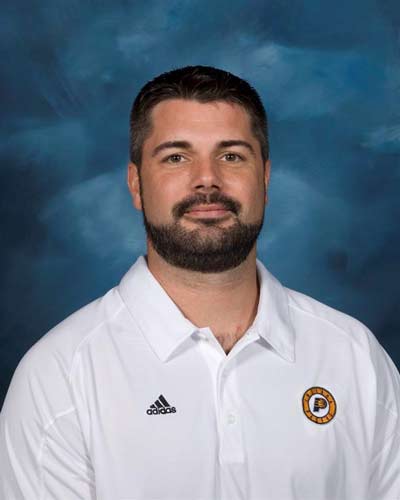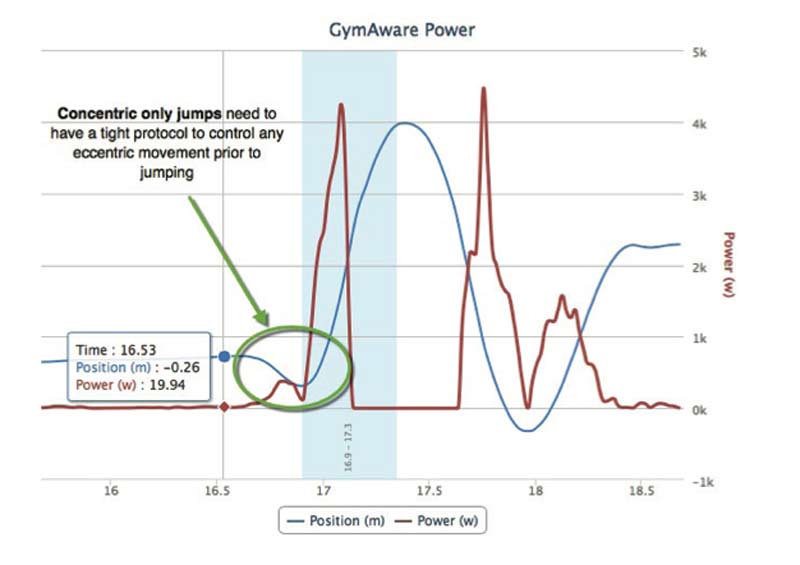
Indiana Pacers Strength Coach Shawn Windle
Shawn Windle is entering his 9th year as the Head Strength Coach/Assistant Athletic Trainer for the Indiana Pacers of the National Basketball Association. Shawn has served as a collegiate strength coach at Rutgers University and the University of Connecticut. He is Certified in the following areas of expertise: Strength & Conditioning (NSCA), Athletic Training (NATA), Performance Enhancement Specialist and Corrective Exercise Specialist (NASM).
Born in Maine, Shawn graduated from the University of Maine at Presque Isle (1996) with a BS in Athletic Training. (Biography and Photo from NBATA)
Editors Note: The reason I wanted to interview Shawn was because he was very honest about the challenges of hard NBA schedules, the sport psychology of testing and working with athletes. What is refreshing to hear is a coach trying to get the best information out there and has an open mind, but still skeptical to remove him from hype and marketing. Sometimes the basics are not exciting, but navigating to the cool and new is often a path to failure. I want to thank Shawn for getting down to basics and doing what needs to be done.
Athlete Motivation
Freelap USA – Athletes are sometimes not interested in training at all, never mind hard. Some athletes are addicted to lifting and are prone to overtraining. With the NBA having a culture of playing and talent rising to the top, how do you motivate million dollar athletes?
Coach Windle – Every individual is different…the culture in basketball is beginning to change, so newer players understand that working out is part of the process to development. In the past, players felt that since it was a skill-dominated sport that training had little influence on their game. The biggest motivators are contract years, lack of playing time, a player drafted in the same position, injury, and trying to squeeze a few more years out of their body. I try to remind these guys that their body is how they make their living and if that goes, so does their cash flow. Everybody has something that motivates them…the art of coaching is finding the right buttons to push.
Carl’s Take – Motivation is not about “Braveheart speeches in locker rooms” because like any stimulus, the law of diminishing returns hits home. A better option is to understand the difference between lazy and burned out because overtraining and fatigue will discourage anything related to sport. For example look at foam rolling. If you are a ten-year vet in the NBA and have had fairly current coaches since high school, are you interested in using the tool after 17 years? Boredom is real, but passion is contagious. When goals are properly constructed based on individualized personality profiles, better training and better compliance is possible.
Athlete Nutrition
Freelap USA – You are working with a nutritionist to get the most of athletes that are known to eat candy, drown in burgers, and sometimes get in trouble drinking. How does one get athletes to make improvements with eating when you are not with them besides education?
Coach Windle – We provide these players with plenty of healthy options, but as the old saying goes, you can lead a horse to water, but you cant make him drink. Young adults that perform at the highest level are not all that interested in changing things that have always “worked” for them in the past. We continue to educate guys about the importance of nutrition, but very few will make significant changes until, see above question…contract year, injury, end of a career, etc. Any of us that say we would be different if we were paid millions of guaranteed dollars are liars. We try to focus on the low hanging fruit; we push 3-4 meals a day, proper nutrition timing, hydration, and other relatively easy modifications that are easy to implement.
Carl’s Take – Nutrition for me has evolved since my recovery for athletes project in college, but the changes are the application of sports nutrition, and not on the cutting edge science as much. Nutrition can be observed through body composition and training performance data, but I like to use blood analysis and indiboards or reports for athletes. I contributed in preparing a research paper on hormonal indices in professional baseball recently, and use that data to create infographics to help athletes make behavioral changes. At the end of the day it’s what the athlete does, not what you know, but a step forward is what the athlete does based on what he or she knows is likely a better saying. Education is great, compliance is better. Sometimes just making sure good options are adopted rather than perfect options. An example of this is offering damage control meals with very good macros and micros prepared similar to how athletes like it, but move the needle each year so they change their taste preferences.

Chart 1: Profiling will involve static data, transient data, and dynamic data. For example athletes should get tested with both biochemical testing and actual field tests to see how their static DNA changes over short and long-term periods. Some markers like ferritin are responsive in weeks while some tests like jump tests can change daily.
Sport Science
Freelap USA – Data and Sport Science is important, but what have you found to work five years ago that may be helpful to new coaches working with athletes today. While principles are timeless sometimes techniques must be tweaked because of culture.
Coach Windle – You cannot replace attendance, effort/intensity, and overload. I think younger strength coaches have a pretty good understanding of the importance of recovery and some of the methods but understanding that sometimes less is more when it comes to training volume is not understood. Coaches get carried away with needs analysis, and the programs can be quite long…don’t forget that 80% of your results come from 20% of what you are doing for them. Decide what those most important things are and get good at them. Since our volumes are very low I need each of our guys to come in often (drip method), work hard, and I am going to load them. Strength is a huge foundational quality!
Carl’s Take – My first coaching job I took attendance because when I was an athlete that was the first thing done during the beginning of the workout. Ten years later before the rise of Dashboards and other technologies, I used an attendance board and used smiley face stickers based on available days and participation. Clearly ripped off from my former coaches, the smiley face was also based on the main set and completion and hitting the times or loads. While this is primitive to say the least, what surprises me is the embarrassing lack of good visualization or inclusion of such a chart with Athlete Management System. Sport Science is always trumped by logic and reason, and should be collaborative and not exclusive from each other.
Athlete Monitoring
Freelap USA – What ways do you monitor athletes besides the common approaches of Omegawave and other options? Clearly compliance is much different in the NBA versus professional soccer and rugby, but surely you have a simple system that can show a way to track changes in readiness. Any tips?
Coach Windle – Tough to answer since I know I will get killed on my answer! We track mechanical loads and physiological loads to chart patterns, but there are FAR too many variables involved in our day to day to say that I like anything that we have tried. That doesn’t mean that we are not working on something internal to determine readiness, but I have not seen anything yet that I feel is a winner. Many tools show great promise. I know a lot of people have read my thoughts on HRV…I think HRV could be a great tool however we do not have a consistent way to measure our guys to make the data meaningful. There are Proteus patches that we have used with players overnight to get their lowest HR, but most of our guys are not excited about being monitored 24hrs a day. My biggest fear is that a poor score on an HRV or any readiness measurement is going to cripple a player psychologically. Should I tell him the morning of a game that he is about to play like crap? And what if he doesn’t? Should I tell the coach that are go to guy should play less? If his readiness score changes my approach with the player than I have not been doing my job in implementing recovery strategies. In the NBA we play more than we practice; not many guys are getting worn down from practices. I can’t get too much more into some of the things that we are tracking or that show promise to us. I just think that many of these prediction models are severely lacking because they are not controlling enough variables. Products are quick to come to the market so that they can quickly make a profit. Lucky for them that many coaches are not interested to do their own research and are excited to jump on board because of testimonials and fuzzy science. I’m not trying to sound smarter than others, hell maybe I am dumber than most, but there are a lot of products that just don’t make sense to me. Maybe I am missing something.
Carl’s Take – Two big talking points here with physiological monitoring and adoption with teams. Negative placebos are real, and very few coaches talk about the problems when objective feedback is not positive. One example of this is the interpretation of a poor ANS score the morning of the game, and blind sampling isn’t going to be popular with older athletes, and they want their data! Some athletes “stew and brew” and will have sympathetic scores, not a bad thing come game day. False positives happen, but discussion is always part of the process. Shawn is right about fuzzy science, especially bogus marketing terms like “Movement Signature” and “ CNS Algorithms”. I highly suggest looking at the science and test-driving the validity of the devices by actual performance tests to see if the physiological monitoring is working with actual output.

Chart 2: Nothing wrong with having a force plate, but college and professional teams should use bar tracking technologies that can get displacement for the sensitivity needed to make preventive decisions and actionable interventions. The problems are Force plates are expensive and can’t be scaled to each weight lifting station. Force plates are not as useful as bar tracking technologies for developing power.
The Evolution of Team Coaching
Freelap USA – Working with team coaches is essential to strength coaches because unlike Olympic sports where the coach must be aware of sport science, team coaches sort of do their own things and many coaches scramble to keep the athletes from doing too much resulting in a holding pattern of loading. How do you see the future develop here with team coaches? Will they be learning more sport science and sports medicine in the future?
Coach Windle – Coaching is an evolution. The coaches that are coaching now all had a strength coach when they played (at least most), so it’s not like we have to convince coaches that we have a role in team success/failure anymore. Each year we are moving closer towards accepting the European Sports Science type of model with High Performance Directors and although new I think many coaches realize that the age of sports science, data collection, and human performance teams are becoming the new norm. As much as coaches rely on us for input we, as coaches must not forget that we work for the Head Coach. We can educate our coaches as to best methods, but we must carry out their plan/vision for the team. It is no different than being in the military from the standpoint of we all-better be in support of the mission because we all have somebody to answer to.
Carl’s Take – The future can come faster if team coaches designed periodized practices versus being on an island and doing training based on Xs and Os versus biochemistry and biomechanics. Some coaches get seasonal planning, and some understand practice load, such as Bill Walsh, but the evolution is going to be beyond what Chip is doing in Philadelphia. Instead of complaining, I suggest coaches that seem to get a lot of athletes who are beat up in practice design their skill and tactical workouts for the coach based on reasonable allocation of time and energy and add their training elements as well. Make sure to be creative and see how this looks on a calendar or weekly planner and use simple icons and colors to help visualize what the sport science perspective looks like. Doing something like this is far better than buying a GPS system because that is reactionary and not planning. Player tracking provides convenience through automation and precision, but not strategy and periodization.
Please share this article so others may benefit.
[mashshare]

